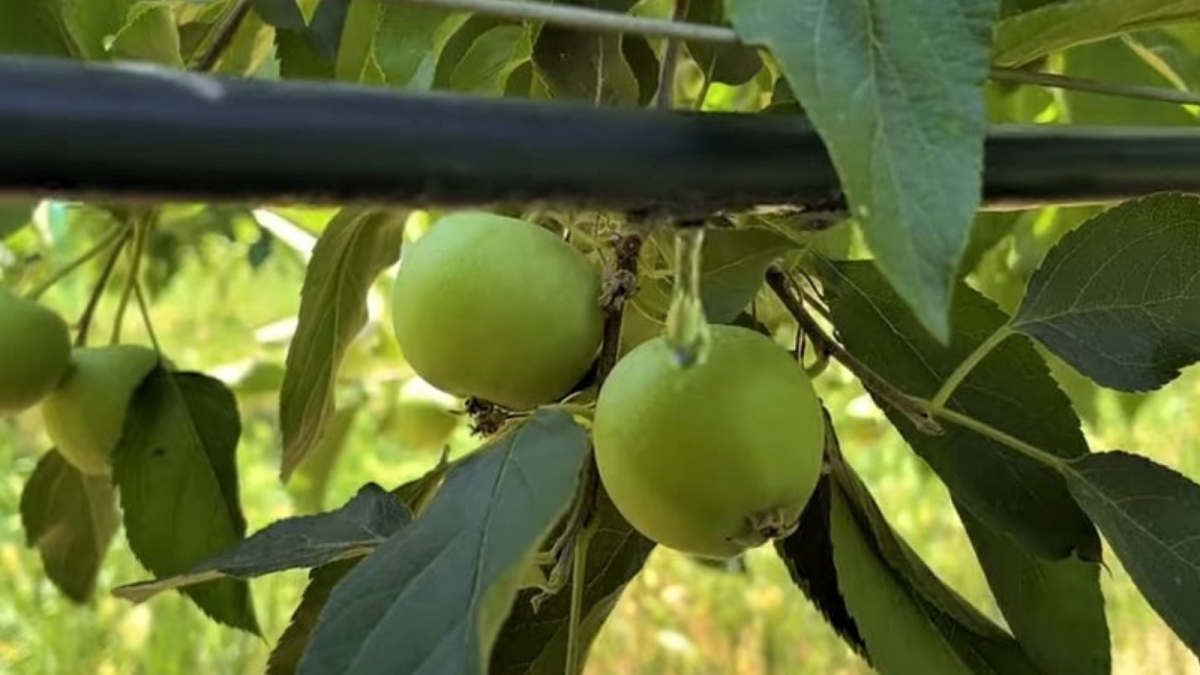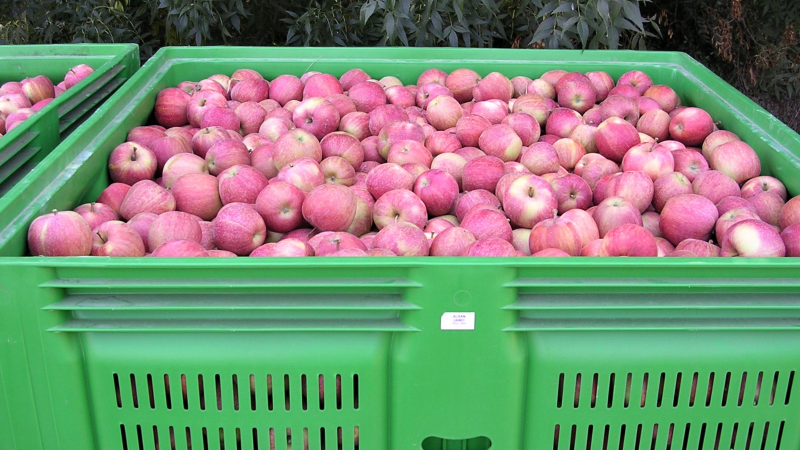Since 2018, Giropoma has implemented an irrigation system based on soil moisture sensors to indicate the humidity and water available for apple trees. It is a network of sensors distributed throughout the productive area which, through the data extracted and a climate forecast, allow them to give weekly irrigation recommendations to their partners – producers. These recommendations are made twice a week, and are useful for them to know if they have to increase irrigation, or on the contrary, decrease it, or keep it the same.
The method consists of soil monitoring based on probes that measure the volumetric content of water in the soil, and based on this volume, they know the amount of water available. The sensors are placed at 20 cm from the surface, in order to have a control of the water on the surface; at 40 cm, where the most relevant amount of apple tree roots are located; and at 60 cm, the area where there are no more roots and water is not available for the trees.
These tools, which provide information on the approximate distribution of water in the soil, allow the company to check the degree of humidity and whether the irrigation being carried out is correct. This means that the water reaches up to 40 cm from the surface, where the roots of the apple trees are located, or on the contrary, irrigation is insufficient, or more water is being used than necessary.
However, the data are indicative and it is necessary to know the type of soil and the field in question. For this reason, Giropoma has different points where they monitor soil moisture, since each field has different ways of obtaining water and different types of soil.
In recent years, with this system based on soil moisture sensors, the company has detected a 30% decrease in irrigation water compared to the water balance method previously used. In other words, less water is being irrigated compared to the traditional way of calculating irrigation needs. The way of calculating needs based on probes, with sensors in the soil, has allowed them to use less water and, therefore, to be more efficient and rational.
It has been 5 years since the company implemented this 100% efficient method and, despite the current exceptional state of drought, it has not had to take any special measures or make any modifications in terms of water rationing and irrigation recommendations, thanks to this long-standing irrigation optimization action.
In this case, the one that does play an important role for Giropoma is fruit thinning, emphasizing this practice to ensure the viability and quality of the apples of the new season. It is of vital importance to ensure that the fruit units that can reach the harvest have the desired quality, as well as to avoid possible fields with excess fruit. In this way, the rest of the fruit can develop correctly and contribute to saving water.
Currently, the lack of rainfall and the low availability of water, which accentuate the drought episode, hinder the production process of apples and the rest of the crops.




